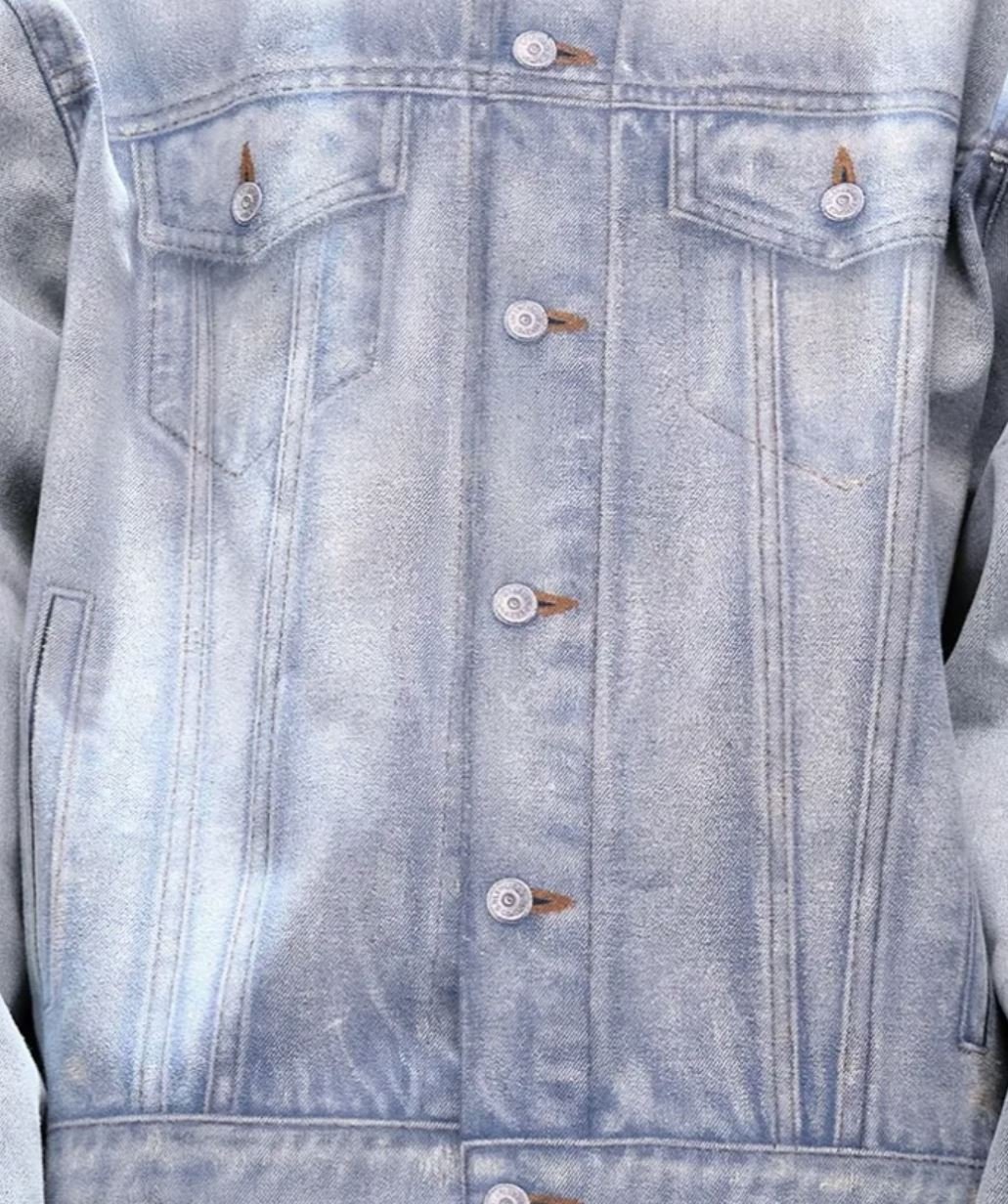Trompe l'oeil denim
Trompe l'oeil translating as "deceive the eye", is the artistic technique of creating an optical illusion through flat realistic details which appear to be three dimensional and real.
One designer that helped to popularise this technique within the fashion world is Elsa Schiaparelli. A famous example shown here is the ‘Tear dress’, designed in collaboration with Salvador Dali in 1938.
It’s a technique still found today and has even been used to recreate denim in a number of innovative and interesting techniques. Here are just a few interesting ways denim finishes are being imitated.
BEADING
Believe it or not, this is actually created with hand embroidered beading.
As part of the Valentino Haute Couture Fall/Winter collection, detailed artworks were created from digital 3D scans of ‘real’ denim and used to create this trompe l’oeil effect. Stitched diagonally to replicate a denim twill, this intricate work took four weeks to complete.
Designer Pierpaolo Piccioli advised that “The 'real' denim was translated through shading areas with 80 indigo shades of microbeads, with beads cut on two sides only because I wanted a softer and less sparkling effect”.
The outer edge was embroidered with a white thread to mirror a selvedge finish. The final finishing of rivets and buttons were added just as your typical pair of jeans.
PAINTING
In Balenciaga’s latest Haute Couture offering, they showed carefully hand painted garments which recreated denim fades and detailing. Using oil based paints on linen fabric bases; all details of the wash, down to the buttons and topstitching were illustrated taking a 100 hours worth of painting.
PRINTING
Not all trompe l’oeil results have to be so costly as hand beading or painting for Haute Couture; printing denim has therefore become popular for several brands including Jean Paul Gaultier, Victoria Beckham, Rag & Bone and Diesel. A simple and effective way to create interesting wash techniques and play with denim detailing and scale.
In fact, printing denim has also been viewed as a creative way to deal with the issue of sustainability by eliminating the large amount of water and chemicals used within the denim dyeing and washing process.
As part of the World Sustainability Awards 2023, one judge commented on New Launch Awards winners Kantoor brands as “Genuinely creative, decisive and a standard-setter. Who would have thought printing jeans could be a solution, let alone an effective sustainability pathway? ” Their brand Lee won the award for using it’s reactive pigment printing technology to print directly onto cotton.
As well as designers and brands, mills have also started to explore printed denim. Stella Blu, a division of Prosperity Textiles denim manufacturer, has launched it’s own solution to this. Working in collaboration with NTX, they have announced Cooltrans. A new colour transfer technique that uses no heat and reduces water use by up to 90%. Impressively, this technique is possible on almost all fabric types including natural, cellulose and synthetics without impacting performance or feel. With precise colouration, Cooltrans can simultaneously print both sides of the fabric at once.
In addition to the environmental advantages, this technique presents the opportunity that brands can limit the use of fabrics to one greige quality and still achieve a multitude of aesthetics. Thereby supporting speed to market and fabric consolidation.
Marco Stefanelli, marketing director of Stella Blu, made the statement: “In the past, we had tried several previous attempts to use digital printing on denim. Most of them had fallen short, primarily due to a lack of scalability, high prices, low resolution and poor hand feel. Differently, this time, Cooltrans is addressing all these issues and more. This is not digital, sublimation, or ink jet printing. It is a brand-new revolutionary waterless textile coloration technology that creates a unique value proposition. We cannot say how we compare to other waterless technologies because, to the best of our knowledge, they’re mostly specialized for singular material types or fibers. There is no other waterless low-carbon printing or dyeing technology that is applicable for any type of material or fiber like Cooltrans.”
As you can see there isn’t only one way to achieve the denim look. With advancements in technology and creative design thinking there are many ways to replicate the loved outlook of denim and most excitingly be more environmentally focused in doing so.


















